Other Words For "Look" + With Meanings | List For Writers
Other Words for "Look" + With meanings | List for writers
Many people create lists of synonyms for the word 'said,' but what about the word 'look'? Here are some synonyms that I enjoy using in my writing, along with their meanings for your reference. While all these words relate to 'look,' they each carry distinct meanings and nuances, so I thought it would be helpful to provide meanings for each one.
Gaze - To look steadily and intently, especially in admiration or thought.
Glance - A brief or hurried look.
Peek - A quick and typically secretive look.
Peer - To look with difficulty or concentration.
Scan - To look over quickly but thoroughly.
Observe - To watch carefully and attentively.
Inspect - To look at closely in order to assess condition or quality.
Stare - To look fixedly or vacantly at someone or something.
Glimpse - To see or perceive briefly or partially.
Eye - To look or stare at intently.
Peruse - To read or examine something with great care.
Scrutinize - To examine or inspect closely and thoroughly.
Behold - To see or observe a thing or person, especially a remarkable one.
Witness - To see something happen, typically a significant event.
Spot - To see, notice, or recognize someone or something.
Contemplate - To look thoughtfully for a long time at.
Sight - To suddenly or unexpectedly see something or someone.
Ogle - To stare at in a lecherous manner.
Leer - To look or gaze in an unpleasant, malicious way.
Gawk - To stare openly and stupidly.
Gape - To stare with one's mouth open wide, in amazement.
Squint - To look with eyes partially closed.
Regard - To consider or think of in a specified way.
Admire - To regard with pleasure, wonder, and approval.
Skim - To look through quickly to gain superficial knowledge.
Reconnoiter - To make a military observation of a region.
Flick - To look or move the eyes quickly.
Rake - To look through something rapidly and unsystematically.
Glare - To look angrily or fiercely.
Peep - To look quickly and secretly through an opening.
Focus - To concentrate one's visual effort on.
Discover - To find or realize something not clear before.
Spot-check - To examine something briefly or at random.
Devour - To look over with eager enthusiasm.
Examine - To inspect in detail to determine condition.
Feast one's eyes - To look at something with great enjoyment.
Catch sight of - To suddenly or unexpectedly see.
Clap eyes on - To suddenly see someone or something.
Set eyes on - To look at, especially for the first time.
Take a dekko - Colloquial for taking a look.
Leer at - To look or gaze in a suggestive manner.
Rubberneck - To stare at something in a foolish way.
Make out - To manage to see or read with difficulty.
Lay eyes on - To see or look at.
Pore over - To look at or read something intently.
Ogle at - To look at in a lecherous or predatory way.
Pry - To look or inquire into something in a determined manner.
Dart - To look quickly or furtively.
Drink in - To look at with great enjoyment or fascination.
Bask in - To look at or enjoy something for a period of time.


More Posts from Basket-of-references and Others
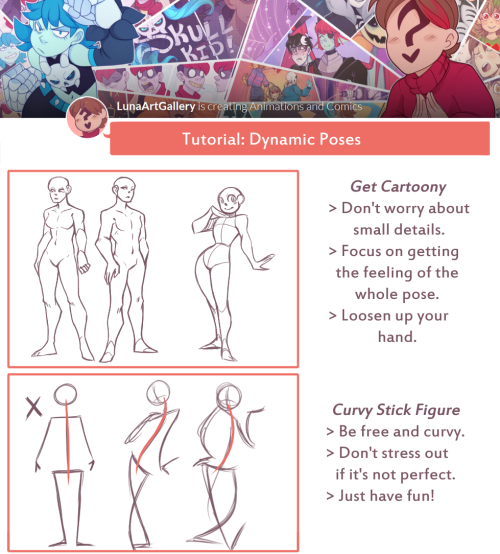
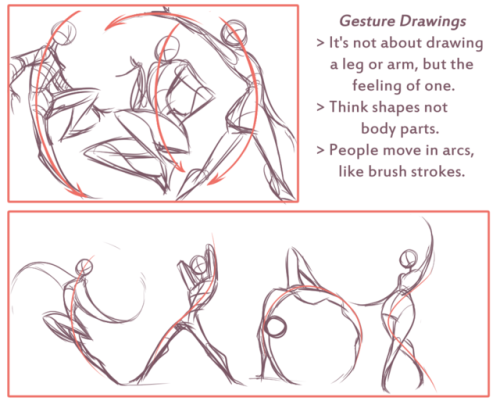

Art Tutorial Preview
This one was a short weekly tutorial briefly talking about gesture drawing, shapes and how to reference. Next week I’ll do a reference sheet with dynamic poses, I didn’t get to it this week cause I ran out of time. Anyways I hoped this helped some people!
Yo! Get full access to all my tutorials/references through: Patreon: [https://www.patreon.com/lunaartgallery] or Paypal Order: the 10$ package will get you 15 items of anything available on my Patreon, emailed directly to you.
Thank you~!
I really, and I mean, really LOVE the way you draw robots! If's so mechanical and just eye-pleasing honestly.
I want to try drawing robots myself as you've inspired me! Do you have any tips on doing so?

Sorry for taking so long to respond, I’m really glad I inspired you! these are a few things I use in nearly every robot design/drawing
I think it’s super important to know how your robot moves and these common joints are a great way to start!
And remember these are just suggestions go wild with your robot designs! They can be anything and do anything you can think of :D
U use colors in such a enrichening way, how do you do that may I ask??
thank you so much! 💕
this answer is going to be a little long.
the first thing, i think, is that it's very common to think of color as a means to an end, as just another type of information about a drawing: i'm using brown on the hair to show that the hair is brown, i'm using green to show that the characters are standing in grass.
but if color is information, then we can use it to say a lot more than just the basic facts of a drawing!
if you love drawing but want to get better with color, you have to learn to love color, too.
to want to know everything about how color works, to explore what different colors mean to you, to try and try and try again.
because, and this is the kicker:
ALL COLORS ARE RELATED TO EACH OTHER!

[from this post about how to use a color wheel]
i think it's common for people to talk about complementary colors and that's helpful when you're starting out with coloring, but i feel that it can become very limiting when it's treated like a rule and can obscure the fact that all colors are related to each other. it's called a color wheel because there is no beginning or end!

for example, take this drawing:

in this drawing, i'm using colors from all over:

but by just rearranging them slightly and throwing them against a black background like in the drawing, you can see how they're actually relating to each other and not nearly as random as they may seem at first glance!

[these notes are from this post where i break down how muted or "ugly" colors pull an image together] all colors are related to each other in some way, and that means that
YOU MUST DETERMINE WHAT EACH COLOR MEANS TO YOU, AND IT IS YOUR RESPONSIBILITY TO CONVEY THAT MEANING TO YOUR AUDIENCE.

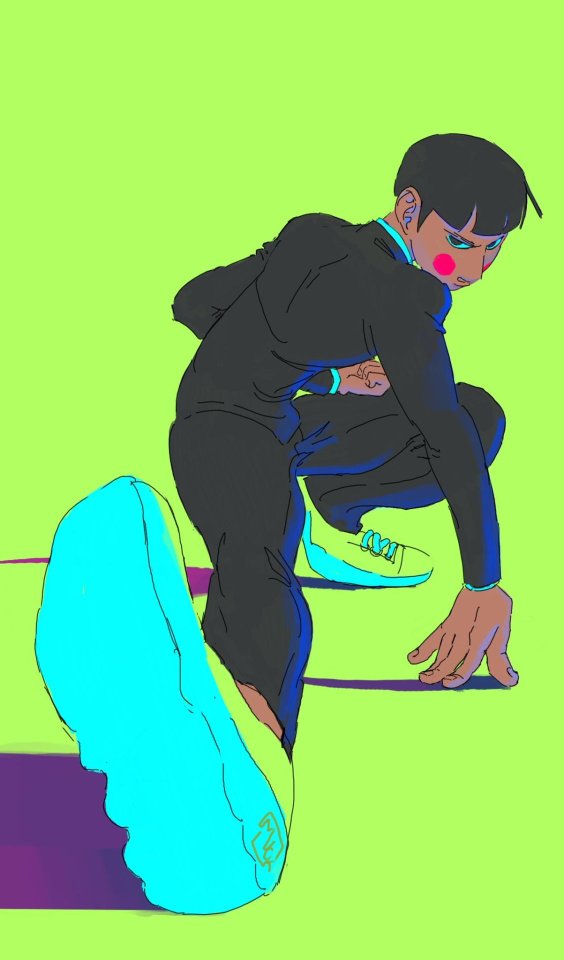

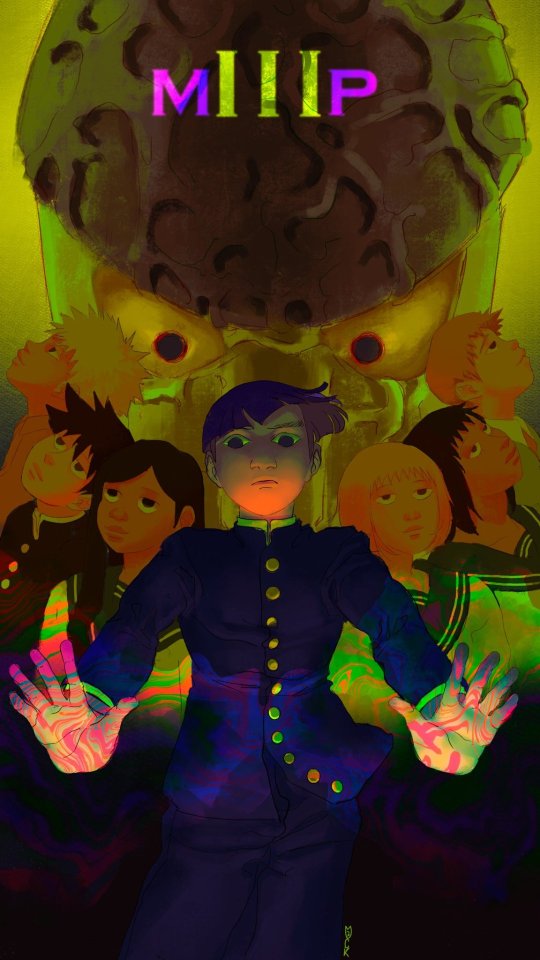
for example, to me green can be uncomfortable and overwhelming, energetic and edgy, calm and natural, or fearful and tense. but no matter how it makes me feel, it's my responsibility to convey my relationship to green to whoever even glances at my drawing.
sure you can use commonly held ideas about colors [red = angry, blue = sad], but this shorthand is also limiting. if everyone used these commonly held ideas about color, there would be no room for experimentation or interesting, wild color choices! and colors mean different things to everyone-- that's what makes everyone's colorful art so different and so cool!!
another thing to note about those green drawings: each one is using a specific type of green.
the one with reigen leans blue-green, which creates a cool-colored image. meanwhile, reigen is warmer tones, which almost makes it seem like he's overheating when he's thrown against such a cool-toned background, which further expresses his discomfort!
the dimple!mob drawing is like a sprite or mountain dew-green, which encourages the feeling of electricity or energy. it's a cool yellowish-green.
the one of mob floating is a warmer yellowish-green, to suggest sunny warmth without drawing sun rays.
the divine tree arc drawing is a lot of reddish-greens, which can suggest a sickliness.
experiment with color combinations and different shades and hues! explore what these different types of colors mean to you!
so now let's get into the nitty gritty of color choice. the following images are from my free pdf about color, composition, and intuitive drawing:






the main takeaways from these pages are:
consider simplifying your colors! more colors does not necessarily equal a better drawing.
see how much a single color can do! can you use it in multiple places on your drawing? what meaning can you ascribe to the colors you're using?
consider creating a concept for your colors and a few rules to guide your piece! a lot of great drawings can fall apart because the coloring concept was too vague or because there weren't enough rules or guidelines to keep the image coherent.
are your colors saturated enough? are the different colors you're using fighting for the viewer's attention? do you have focal points in your art, and if so, are the colors you're using reinforcing those focal points?
use the tools at your disposal! color-picking, color balance, overlay layers. it can feel important to try to prove something by hand-picking every color, but even when i hand-pick my colors i almost always check them with color balance anyway to make sure i'm picking the best colors possible.
YOU DO NOT HAVE TO SUFFER FOR ART. PLEASE use everything that is available to you, and make sure that you are aligned with what brings you joy when you're making art!
i wanted to show an example of a drawing i've done that is doing way too much vs a drawing that is simpler but more balanced:


on the left, the colors are interesting but the background is too strong and is competing with the actual drawing for attention. on the right, the clear background and simple coloring create a cute, easy to read, successful image! this is what i mean when i say that colors can fight for the viewer's attention and mess up a good drawing.
my final secret is that i rarely shade with or use white, black, or grays. i don't think this is a rule that you have to follow, but i like it because it pushes me to figure out what colors will go best with each other, and i think this single tip has strengthened my understanding of color immensely. however, there are a lot of beautiful art styles that shade with and use pure white, black, and gray. you have to decide what you love!
and
STUDY!!!
look at other people's art, color pick it, and make a palette based on their art! look at how they represent values through color, how they shade, etc. study your favorite artists' work!! you will learn so much!!
i hope this was helpful! if you have any more follow-up questions or if there's something that you want to know that i didn't explain here, please don't hesitate to ask!









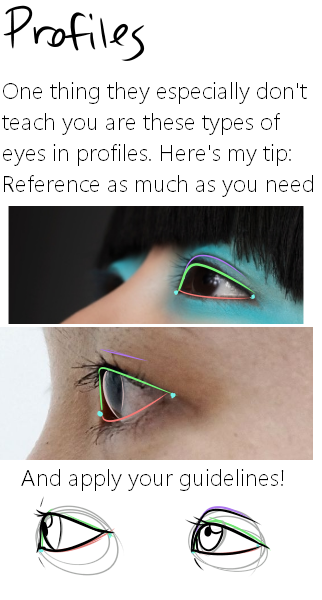
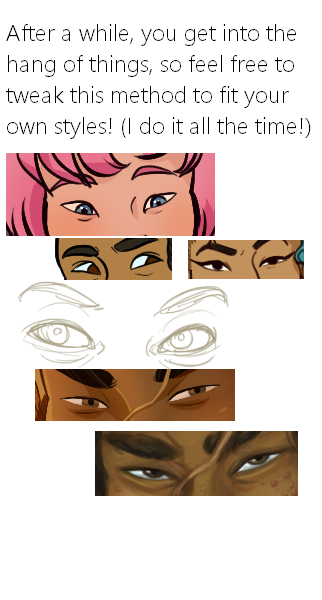
Here it is, my long winded tutorial, complete with some step by step action. I see a lot of people talk about wanting to diversify their artwork but not knowing how. This is my help to you. You really should take the time to invest in learning diverse eye shapes as diverse artwork always makes you a better artist. And frankly I’m really tired of drawing tutorials that talk up character diversity but only have the stereotypical “one Asian eye”.
I did some step by steps for those three diagrams, but I actually got them from this blog which has 14 of those examples! (Bonus: it’s a makeup blog so if you need help with that or want some idea of how to shade these eyes, there ya go)
Art-Res Start Here
Help me keep Art-Res running for years to come!
> buy me a coffee / patreon
> art commissions @astrikos )
> book 1:1 tutoring/question session
> Buy the Art-Res Anatomy Ebook!
> Link Tree
Sharing this blog w/your homies also helps a ton!
Start here!
Join our community - networking + discord invite!
Art Book Recommendations
anatomy masterpost
perspective masterpost
Resources to help you master color theory & color theory primer
Beginner’s Guide to Digital Art
Beginner’s guide to traditional art
Ultimate guide to photography for beginners
How to find and develop artistic style
Surefire Ways to Defeat Artist’s Block and Writer’s Block
How to create a free portfolio and blog site
Learn How to Market Your Art the Right Way
A Collection of Great iOS Apps for Artists
Community Tested Social Networking Tips for Artists
Artist Utilities
Idea Generator
Visual Reference Boards
Random Color Palettes
Free Habit Tracker Printable
Note, I working to remove Amazon Affiliates and will not add new links to them until I see substantial change in the way big companies like them treat their workers.
Recent Posts / More Useful Links
Art-Res Website / Personal Art Blog / Instagram / Facebook
Inqueries Please feel free to contact me via email for business inqueries. Open to guest writing, collaborations, sponsorship/advertisements.




I've had this little idea in my head for a while now, so I decided to sit down and plot it out.
Disclaimer: This isn't meant to be some sort of One-Worksheet-Fits-All situation. This is meant to be a visual representation of some type of story planning you could be doing in order to develop a plot!
Lay down groundwork! (Backstory integral to the beginning of your story.) Build hinges. (Events that hinge on other events and fall down like dominoes) Suspend structures. (Withhold just enough information to make the reader curious, and keep them guessing.)
And hey, is this helps... maybe sit down and write a story! :)


I am sad and I want to make you sad. I don’t know why but I love herm’s expression here. so much
-
 gayfelinechaos liked this · 2 weeks ago
gayfelinechaos liked this · 2 weeks ago -
 takibikaen liked this · 2 weeks ago
takibikaen liked this · 2 weeks ago -
 entraptascience124 liked this · 2 weeks ago
entraptascience124 liked this · 2 weeks ago -
 pedacitodeeden reblogged this · 2 weeks ago
pedacitodeeden reblogged this · 2 weeks ago -
 onlyyyariii liked this · 2 weeks ago
onlyyyariii liked this · 2 weeks ago -
 reynaharmonia reblogged this · 2 weeks ago
reynaharmonia reblogged this · 2 weeks ago -
 purecures liked this · 2 weeks ago
purecures liked this · 2 weeks ago -
 full-time-magician liked this · 2 weeks ago
full-time-magician liked this · 2 weeks ago -
 bespectacledgiraffe liked this · 2 weeks ago
bespectacledgiraffe liked this · 2 weeks ago -
 ilovemycatmorethanitlovesme liked this · 2 weeks ago
ilovemycatmorethanitlovesme liked this · 2 weeks ago -
 mythicalmagical-monkeyman reblogged this · 2 weeks ago
mythicalmagical-monkeyman reblogged this · 2 weeks ago -
 mythicalmagical-monkeyman liked this · 2 weeks ago
mythicalmagical-monkeyman liked this · 2 weeks ago -
 cryptidwithaninternetconnection reblogged this · 2 weeks ago
cryptidwithaninternetconnection reblogged this · 2 weeks ago -
 i-love-telemachus reblogged this · 2 weeks ago
i-love-telemachus reblogged this · 2 weeks ago -
 i-love-telemachus liked this · 2 weeks ago
i-love-telemachus liked this · 2 weeks ago -
 lovelessdagger liked this · 2 weeks ago
lovelessdagger liked this · 2 weeks ago -
 black-y-white liked this · 2 weeks ago
black-y-white liked this · 2 weeks ago -
 bouka24 liked this · 2 weeks ago
bouka24 liked this · 2 weeks ago -
 lostandforgotten196 reblogged this · 2 weeks ago
lostandforgotten196 reblogged this · 2 weeks ago -
 remthe-sleepy-mage liked this · 2 weeks ago
remthe-sleepy-mage liked this · 2 weeks ago -
 blindingwrathlate liked this · 2 weeks ago
blindingwrathlate liked this · 2 weeks ago -
 glyndwr73 liked this · 2 weeks ago
glyndwr73 liked this · 2 weeks ago -
 finalgirldarko liked this · 2 weeks ago
finalgirldarko liked this · 2 weeks ago -
 shepherdrp liked this · 2 weeks ago
shepherdrp liked this · 2 weeks ago -
 din0meat liked this · 2 weeks ago
din0meat liked this · 2 weeks ago -
 ghostcomit reblogged this · 2 weeks ago
ghostcomit reblogged this · 2 weeks ago -
 honeyxfluff liked this · 2 weeks ago
honeyxfluff liked this · 2 weeks ago -
 maincharacterexe liked this · 2 weeks ago
maincharacterexe liked this · 2 weeks ago -
 despirte liked this · 2 weeks ago
despirte liked this · 2 weeks ago -
 helgasinclairwasmyfirstcrush liked this · 2 weeks ago
helgasinclairwasmyfirstcrush liked this · 2 weeks ago -
 mccarthaswritingblog reblogged this · 2 weeks ago
mccarthaswritingblog reblogged this · 2 weeks ago -
 angrylittlepiglet liked this · 2 weeks ago
angrylittlepiglet liked this · 2 weeks ago -
 yuunnikko liked this · 2 weeks ago
yuunnikko liked this · 2 weeks ago -
 cloudyskydreams liked this · 2 weeks ago
cloudyskydreams liked this · 2 weeks ago -
 choknutyj-shipper liked this · 2 weeks ago
choknutyj-shipper liked this · 2 weeks ago -
 phr0g liked this · 2 weeks ago
phr0g liked this · 2 weeks ago -
 carryingthebannershitposts liked this · 2 weeks ago
carryingthebannershitposts liked this · 2 weeks ago -
 prezofinsanity liked this · 2 weeks ago
prezofinsanity liked this · 2 weeks ago -
 teenagetreeherringparty liked this · 2 weeks ago
teenagetreeherringparty liked this · 2 weeks ago -
 vampiresfoundmynightmares liked this · 3 weeks ago
vampiresfoundmynightmares liked this · 3 weeks ago -
 writeideasandinspirations22 reblogged this · 3 weeks ago
writeideasandinspirations22 reblogged this · 3 weeks ago -
 bambiprincessroleplayanart liked this · 3 weeks ago
bambiprincessroleplayanart liked this · 3 weeks ago -
 multifandomhaven liked this · 3 weeks ago
multifandomhaven liked this · 3 weeks ago -
 stanleytherat liked this · 3 weeks ago
stanleytherat liked this · 3 weeks ago -
 erobias reblogged this · 3 weeks ago
erobias reblogged this · 3 weeks ago -
 taco-world liked this · 3 weeks ago
taco-world liked this · 3 weeks ago -
 vile-harlot reblogged this · 3 weeks ago
vile-harlot reblogged this · 3 weeks ago











